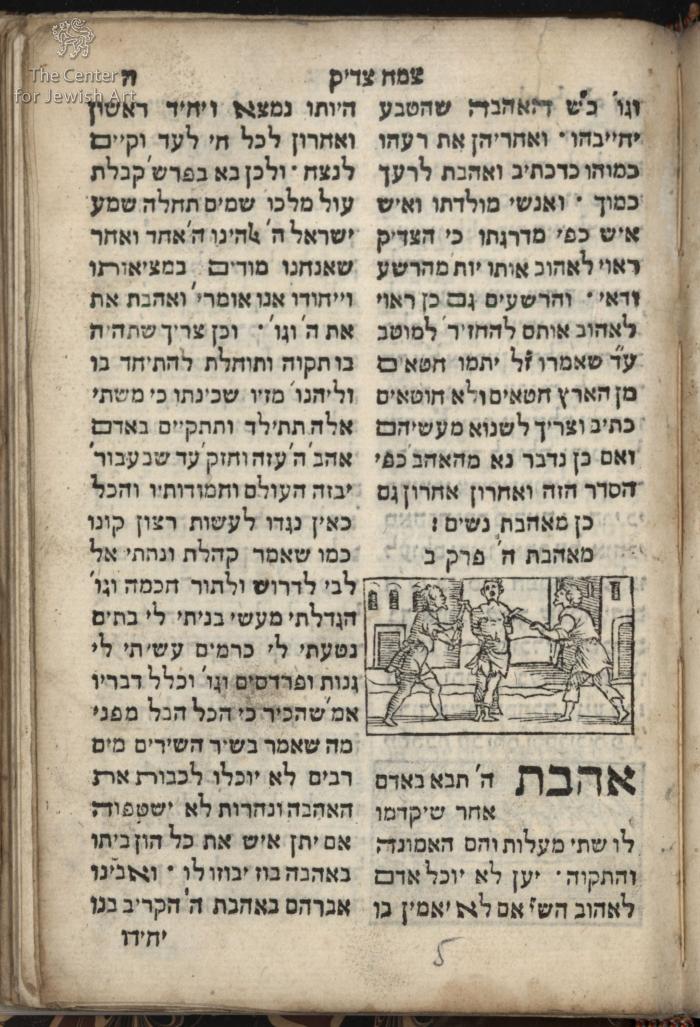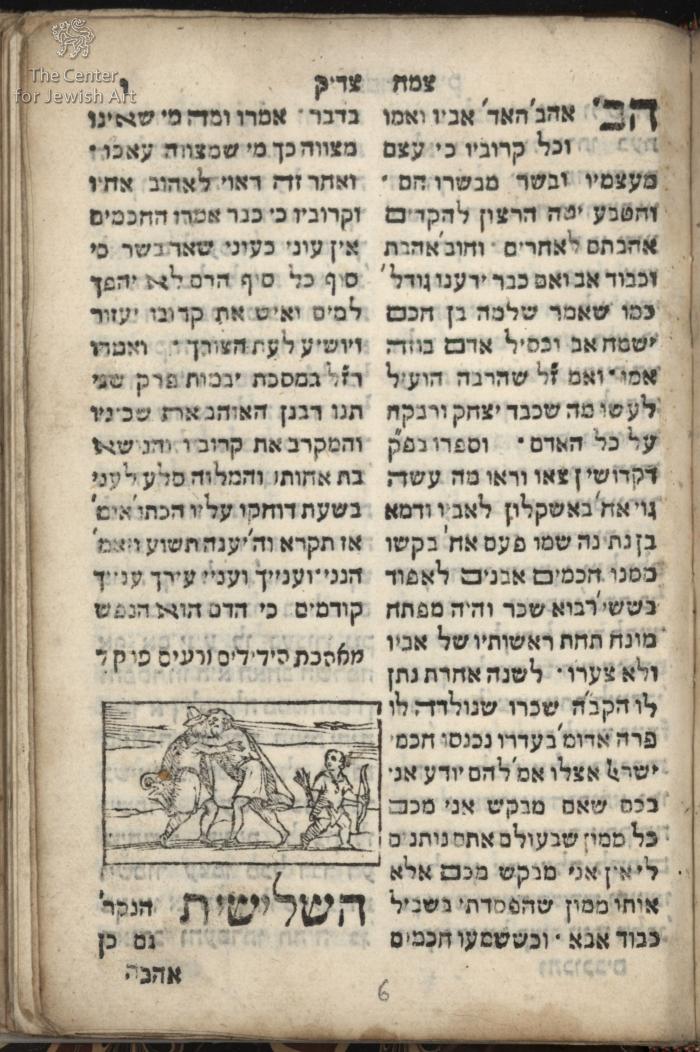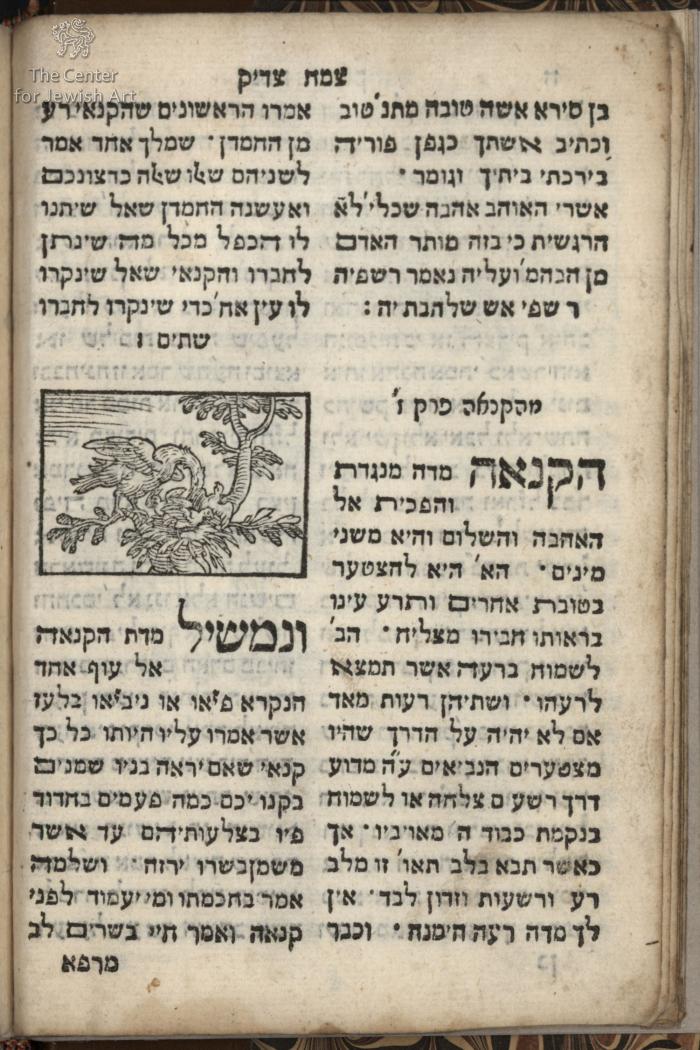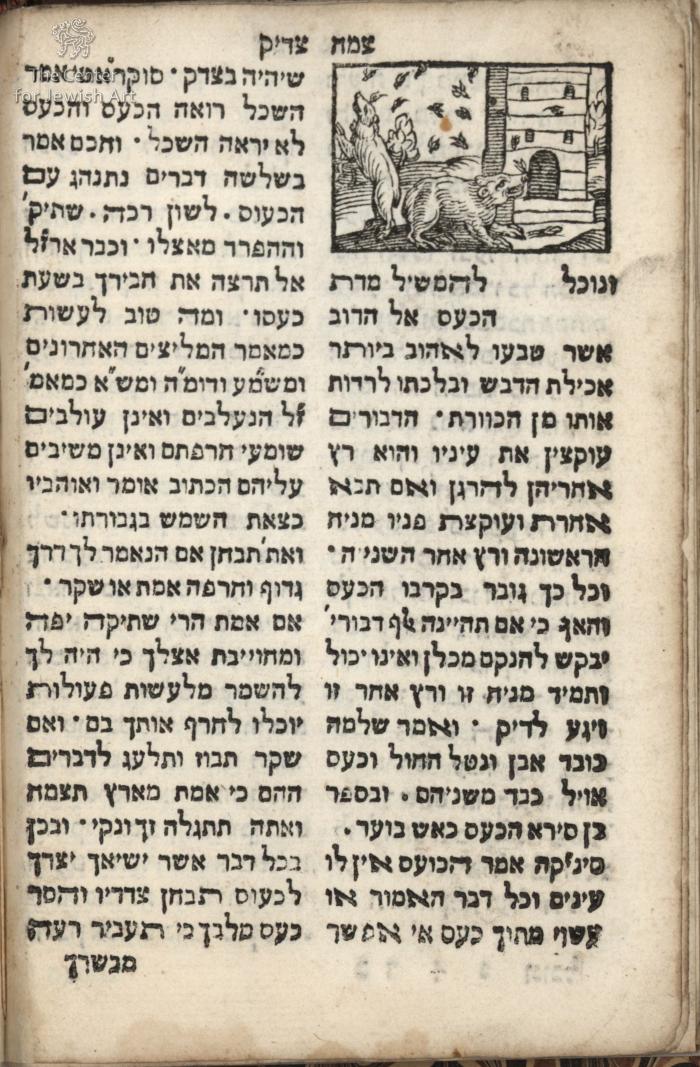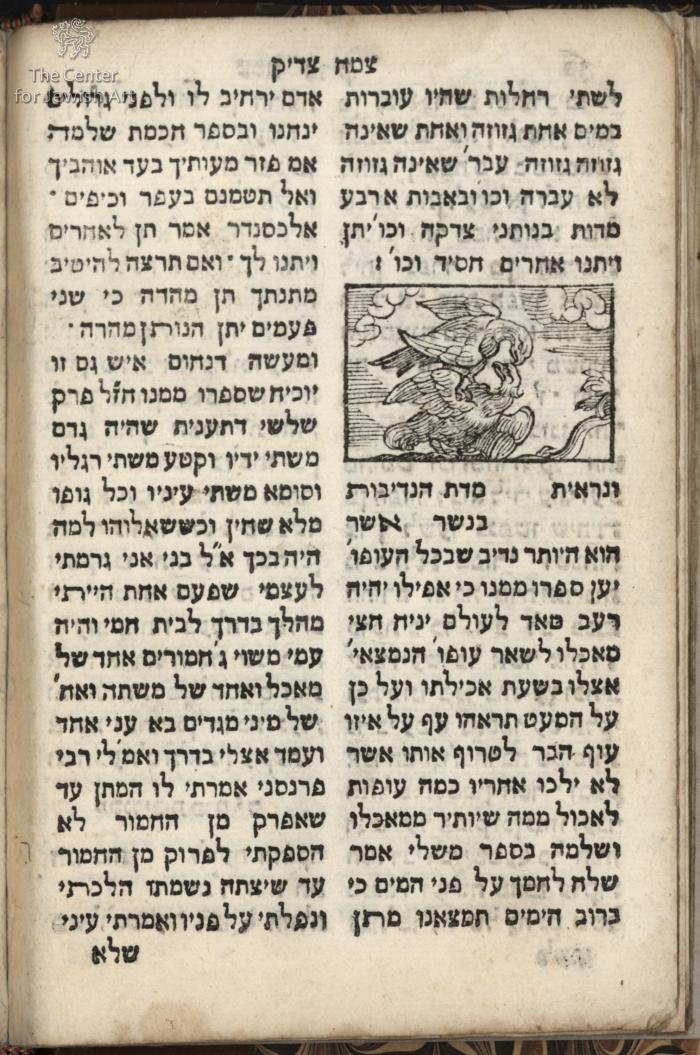Obj. ID: 37513 Tzemach Tzadik by Yehudah Aryeh ben Yitzhak Modena, Venice, 1600
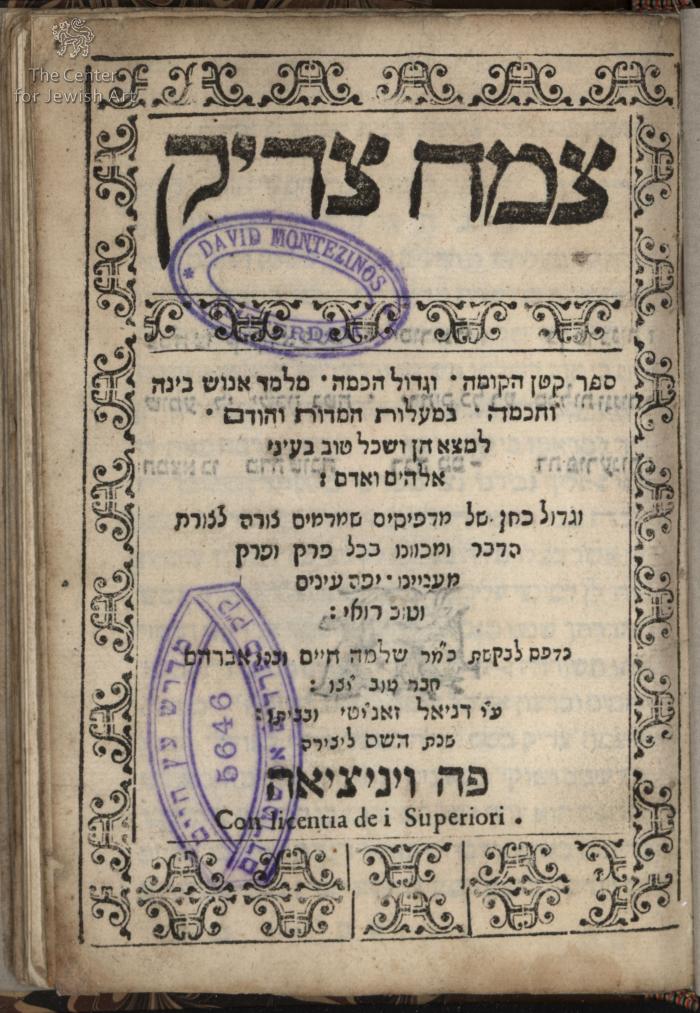
sub-set tree:
This text was prepared by William Gross:
Translation of the Italian book of ethical parables, Fior di Virt, into Hebrew by R. Leone (Judah Aryeh) b. Isaac Modena. Fior di Virt (“flower of virtue”) is a compilation from any earlier sources, made in the mid-fourteenth century. R. Modena’s translation broadened and molded this immensely popular text into a distinctive, first-class Jewish ethical treatise. He quotes liberally from the Bible, Talmud and later sources, which often serves to bolster the thoughts of Diogenes, Aristotle and other secular scholars presented here. Modena's name does not appear explicitly in the book, consistent with its anonymous nature. Nevertheless, an allusion in the initial words of the introduction (f.3r) and an acrostic in the first words of chap 1.(f.4r), make his authorship certain
Leone da Modena, described as an “infant prodigy and hoary prodigal”, is among the most fascinating Jews of the Renaissance. He was born in Venice, to a distinguished family of French origin settled in Italy from the 14th century, and raised in Ferrara. Well educated in rabbinic and secular subjects, he moved to Venice in 1592. No fewer than twenty-six occupations are listed in his autobiography, among them: rabbi, teacher, letter-writer and preacher. R. Modena was a prolific writer on a variety of subjects.
Tzemach Tzadik is one of a mere handful of Hebrew books with illustrations printed in the first century-and-a-half of Hebrew printing. Its text is accompanied by 38 handsome woodcuts, each of which illuminates the particular concept discussed in the adjacent text. For example: The author discusses the nature of foolishness (“Kesiluth”) by depicting a bull whose rage resulted in its horns being imbedded in a tree and thus becoming easy prey for the hunter alongside. The section on faintheartedness or cowardice (“Morech”) shows two “scared rabbits” fleeing from a wind-blown leaf. Dozens of virtues and vices, are thus illustrated, usually arranged in pairs, such as: Love and Jealousy, Cruelty and Kindness, and Humility and Pride. The images include not only animals but also people, mythical creatures (such as mermaids [19r] and devils [23r]), and biblical and rabbinic themes (cf. the embrace of David and Jonathan [I Samuel 20:41], and the flaying of Rabbi Akiva [Berakhot 61b]. Many of these illustrations appear to be from the di Gara edition of 1588, while others were added by R. Modena.
The printer Daniel Zanetti inherited the print-shop established in Venice by Matteo Zanetti. Active from 1596-1608, Daniel published more than sixty titles. Title page with typical Zanetti frame.







